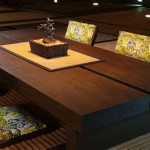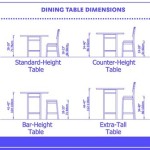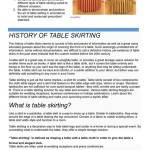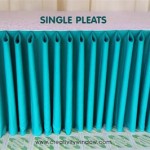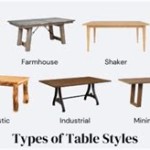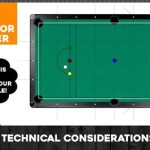```html
Live Edge Table Leg Designs: Aesthetic and Structural Considerations
Live edge tables, characterized by their natural, unrefined edges that showcase the original contours of the tree from which they were sourced, have surged in popularity. The raw beauty of the wood, preserved in the tabletop, often dictates the design of the supporting legs. The legs not only need to provide structural stability and balance but also complement the organic nature of the live edge slab, enhancing its visual appeal. The selection process involves understanding a variety of design options, material choices, and weight-bearing capabilities.
Selecting the appropriate leg design for a live edge table is a multifaceted process. It requires a thoughtful consideration of the table's overall aesthetic, the size and weight of the slab, and the intended use of the table. A poorly chosen leg design can detract from the beauty of the live edge, compromise the table's stability, or simply appear out of proportion.
Metal Leg Designs for Live Edge Tables
Metal legs are a common and versatile choice for live edge tables. They offer a strong contrast to the warmth and organic texture of the wood, creating a visually striking piece. Metal legs can be fabricated in various styles, from sleek and modern to industrial and rustic, allowing for a wide range of design possibilities. They are also known for their inherent strength, making them suitable for supporting heavier slabs.
One popular metal leg design is the hairpin leg. Hairpin legs, named for their characteristic bent shape, are typically made from steel rods and provide a minimalist, mid-century modern aesthetic. They are available in various heights and finishes, making them a versatile option for a variety of table sizes and styles. However, due to their relatively slender profile, hairpin legs may not be the best choice for very large or heavy live edge slabs. The number of hairpin legs used and the gauge of the steel are critical considerations when determining weight capacity.
Another common metal leg design is the trapezoid or A-frame leg. These legs provide excellent stability and can support heavier loads than hairpin legs. The trapezoidal shape distributes the weight more evenly, making them a suitable choice for larger live edge tables. Similar to hairpin legs, trapezoid legs can be customized with different finishes, such as powder coating or clear coating, to match the desired aesthetic.
For a more industrial aesthetic, H-frame legs or I-beam legs are often chosen. These legs are typically made from heavier gauge steel and are characterized by their robust and utilitarian appearance. H-frame legs provide exceptional stability and are well-suited for large, heavy live edge slabs. I-beam legs offer a similar aesthetic but are often fabricated from actual I-beams, further enhancing the industrial feel. Both H-frame and I-beam legs can be left with a raw steel finish or painted to match the desired color scheme.
Spider legs are another visually interesting option. These legs consist of multiple steel rods radiating outward from a central point, creating a spiderweb-like appearance. They offer a unique and contemporary design that can complement the organic nature of the live edge. Spider legs are typically custom-made to suit the specific dimensions and weight of the table.
When selecting metal legs, the finish is also an important consideration. Powder coating provides a durable and scratch-resistant finish in a wide range of colors. Clear coating protects the metal from rust and corrosion while allowing the natural steel color to show through. Raw steel finishes offer a rustic and industrial aesthetic but may require periodic maintenance to prevent rust.
Wooden Leg Designs for Live Edge Tables
Wooden legs offer a warmer and more cohesive aesthetic than metal legs. They can be crafted from the same species of wood as the tabletop, creating a harmonious and unified design. Wooden legs can be shaped and carved in a variety of styles, from traditional to contemporary, allowing for a great deal of design flexibility. However, wood legs are typically less strong than metal legs, especially when slender profiles are desired, so careful species selection and reinforcement techniques are often necessary.
One common wooden leg design is the tapered leg. Tapered legs are characterized by their gradually narrowing profile, creating a sense of elegance and refinement. They can be made from a variety of wood species and finished to match the tabletop. Tapered legs are best suited for smaller to medium-sized live edge tables, as they may not provide sufficient support for very large or heavy slabs. The degree of the taper and the overall thickness of the leg are critical design elements that influence the load-bearing capacity.
Another popular wooden leg design is the trestle leg. Trestle legs consist of two or more vertical supports connected by a horizontal beam. They offer a classic and rustic aesthetic that complements the natural beauty of the live edge. Trestle legs provide excellent stability and can support heavier loads than tapered legs. The design can be modified significantly, from simple and straightforward to more ornate with decorative carvings.
Live edge tables can also be paired with pedestal bases made of wood. Pedestal bases offer a clean and contemporary look, allowing the live edge to be the focal point of the table. The pedestal can be a single, central support or a more complex arrangement of multiple supports. The design and dimensions of the pedestal must be carefully considered to ensure adequate stability. The weight distribution and the contact area with the floor are crucial factors in preventing tipping or wobbling.
When selecting wooden legs, the wood species is a crucial consideration. Hardwoods such as oak, maple, and walnut are generally preferred for their strength and durability. Softwoods such as pine and fir may be suitable for smaller and lighter tables, but they are more susceptible to dents and scratches. The grain pattern and color of the wood should also be considered to ensure that the legs complement the tabletop. The joinery techniques used to connect the legs to the tabletop are also important for ensuring the structural integrity of the table. Traditional joinery methods such as mortise and tenon joints or dovetail joints offer superior strength and durability compared to simpler methods such as screws or nails.
Considering Other Leg Styles and Customization Options
Beyond the aforementioned metal and wooden leg designs, a multitude of other styles and customization options exist to complement diverse aesthetic preferences and project requirements. The key principle is ensuring aesthetic harmony and structural integrity. Creative experimentation can yield truly unique and personalized live edge table designs.
One alternative is the use of acrylic or resin legs. These transparent or translucent legs create a floating effect, allowing the live edge to appear as if it is suspended in mid-air. Acrylic legs can be cast in various shapes and sizes and can be colored to match the surrounding decor. However, the load-bearing capacity of acrylic and resin legs should be carefully considered, particularly for heavier slabs. Reinforcements may be necessary to ensure adequate stability.
Reclaimed materials can also be used to create unique and characterful legs for live edge tables. For example, old barn beams, salvaged metal pipes, or even repurposed machinery parts can be transformed into distinctive table legs. Using reclaimed materials adds a sense of history and sustainability to the table. However, the structural integrity of reclaimed materials should be carefully assessed before use, and any necessary repairs or reinforcements should be made.
Customization options for live edge table legs are virtually limitless. Metal legs can be powder-coated in any color, and wooden legs can be stained or painted to match the tabletop. Intricate carvings or decorative accents can be added to wooden legs to enhance their visual appeal. The height and angle of the legs can also be customized to create a specific look and feel. The ability to tailor every aspect of the leg design allows for the creation of truly bespoke pieces.
In conclusion, the design of the legs for a live edge table is a crucial aspect of the overall piece. The legs must not only provide structural support but also complement the unique beauty of the live edge slab. A careful consideration of material choices, design styles, and customization options is essential for creating a stunning and functional live edge table.
```
Table Legs Desk H28 Only One Leg Diy Steel Furniture Metal For Dining Flowyline Design 413 Ramo

Live Edge Table Leg Ideas Top And Material Flowyline Design

Table Legs Desk Leg W23 X H28 Set Of 2 Pcs Metal Diy Dining Steel Flowyline Design 415 Botas

Table Legs W10 X H28 Set Of 4 Pcs Metal Desk Diy Steel Furniture For Large Dining Flowyline 506 Faras

Table Legs W26x H28 Set Of 2 Pcs Metal For Farmhouse Dining Kitchen Furniture Desk Flowyline Design 411 Draco

Live Edge Table Leg Ideas A Comprehensive Guide Design59

Live Edge Walnut Table Wood Dining Loewen Design Studios

Live Edge Dining Table Modern On Steel Double Y Legs Walnut

Custom Table Legs And Bases Live Edge Bespoke Steel Sorrell Smith Furniture Co

Project Easy Live Edge Table Woodworking Blog S Plans How To

